Camping Knife Maintenance: Keeping Blades Sharp in the Wild
Regular maintenance is crucial for keeping camping knife blades sharp when outdoors. In the wild, maintaining the sharpness of your camping knife blade is essential for various tasks such as cutting ropes, preparing food, and creating shelters.
Proper maintenance includes regular cleaning, sharpening, and storing the knife properly. By following these steps in the wild, you can ensure that your camping knife remains sharp and ready for use when you need it most.
Understanding The Role Of Sharp Blades In Outdoor Survival
Learn the importance of sharp blades for outdoor survival. Discover essential tips for maintaining a camping knife‘s sharpness while in the wild. Keep your blades razor-sharp to ensure your safety and preparedness in any outdoor adventure.
The Significance Of A Sharp Knife In Camping
A sharp knife plays a crucial role in outdoor survival, ensuring your camping experience is safe, efficient, and enjoyable. Understanding why a sharp blade is essential will not only enhance your knife skills but also enable you to make the most out of your camping adventures.
Let’s explore the significance of sharp blades in camping through the following points:
- Increased efficiency in various tasks:
- Cutting and preparing food: A sharp knife allows for effortless slicing and chopping, making meal preparation quicker and more efficient.
- Setting up camp: Whether it’s cutting rope, removing branches, or constructing a shelter, a sharp blade enables you to complete these tasks effectively and without frustration.
- Outdoor activities: From fishing to hunting, a sharp knife enhances your ability to clean and prepare game or fish efficiently.
- Safety considerations while using a knife:
- Reduced risk of accidents: A dull knife requires more pressure to cut, increasing the likelihood of slips and accidents. A sharp blade ensures control and precision, minimizing the risk of injury.
- Clean cuts for faster healing: When in the wilderness, accidents can happen. A sharp knife ensures clean wounds, which promote faster healing and reduce the risk of infection.
- Versatility for emergency situations: A sharp knife can be useful in emergencies such as cutting through belts or rope, creating signaling devices, or even starting a fire.
By understanding the importance of a sharp knife in camping, you can ensure that your blades are well-maintained and ready to assist you in any situation. Remember, maintaining a sharp edge will enhance your camping experience, making it safer and more enjoyable.
So, let’s delve into the world of camping knife maintenance and discover how to keep those blades razor-sharp even in the wild.
Factors Affecting Blade Sharpness In The Wilderness
Blade sharpness in the wilderness is influenced by various factors. Proper camping knife maintenance is crucial to keep blades sharp when venturing into the wild.
Environmental Effects On Blade Performance
When it comes to camping, having a sharp knife is essential. However, the wilderness can pose various challenges that affect the sharpness of your blade. Here are some environmental factors to consider:
- Humidity: High levels of humidity can cause blades to rust and lose their sharpness. Keep your knife dry and use a rust-preventive lubricant.
- Temperature changes: Extreme temperature changes can cause metal to expand or contract, affecting the blade’s performance. Protect your knife from direct sunlight and sudden temperature variations.
- Exposure to dirt and debris: While camping, your knife is likely to come into contact with dirt, sand, and other debris. These contaminants can dull the blade over time. Clean your knife regularly and avoid using it on gritty surfaces.
- Moisture and moisture retention: Moisture and moisture retention can accelerate the process of corrosion on the blade, leading to dullness. Ensure your knife is stored in a dry environment and wipe it dry after any contact with water.
Common Causes Of Blade Dullness
To maintain a sharp camping knife, it’s essential to understand the common causes of blade dullness. Here are some factors that contribute to a dull blade:
- Wear and tear: Regular use can cause the blade to wear down over time. The repeated cutting and slicing motions cause the blade’s edge to lose its sharpness gradually. Sharpen your knife regularly to keep it performing optimally.
- Improper cutting techniques: Incorrect cutting techniques, such as using excessive force or applying side pressure, can cause the blade to become dull faster. Practice proper cutting techniques to prolong the sharpness of your knife’s edge.
- Inadequate storage: Storing a knife improperly can lead to it coming into contact with other objects, resulting in nicks and dents that dull the blade. Use a sheath or knife roll to protect your blade when not in use.
- Lack of maintenance: Neglecting to clean and maintain your knife can lead to the accumulation of dirt, grime, and moisture, which can dull the blade and promote rust. Regularly clean, dry, and oil your knife to prevent dullness and corrosion.
Identifying Signs Of A Dull Knife
Being able to recognize the signs of a dull knife is crucial for maintaining its performance in the wild. Look out for the following indicators:
- Difficulty cutting: If your knife struggles to cut through materials that it previously sliced effortlessly, it might be time to sharpen it.
- Ragged or torn cuts: A dull blade tends to leave ragged or torn edges instead of clean cuts. This can be particularly noticeable when slicing through food or wood.
- Increased force required: If you find yourself exerting more force than usual when using your knife, it might be an indication that the blade has dulled.
- Slippage during cutting: When the blade loses its sharpness, it is more prone to slipping during cutting tasks. This can be dangerous, as it increases the risk of accidents.
- Lack of bite or sharpness: A dull knife will generally lack the sharpness and bite it once had. You might notice a decrease in its cutting effectiveness.
By understanding the environmental effects on blade performance, the common causes of blade dullness, and how to identify signs of a dull knife, you can ensure that your camping knife remains sharp and reliable during your outdoor adventures.
Essential Tools And Techniques For Knife Maintenance
Proper knife maintenance is crucial for camping trips, ensuring sharp blades in the wilderness. Discover essential tools and techniques here.
If you’re an avid camper, you know the importance of a sharp camping knife. A well-maintained blade can make all the difference when camping in the wild. To help you keep your camping knife in top shape, we’ve compiled a list of essential tools and techniques for knife maintenance.
From choosing the right sharpening tools to understanding different sharpening techniques for various blade types, we’ve got you covered. Let’s dive in!
Choosing The Right Sharpening Tools
When it comes to knife maintenance, having the right tools is crucial. Here are some essential tools to consider for keeping your camping knife sharp:
- Sharpening stone: A sharpening stone is a versatile tool that allows you to sharpen your knife blades effectively. Look for a high-quality stone with different grit options for optimal results.
- Honing rod: A honing rod is an excellent tool for regular maintenance of the blade’s edge. It helps to realign and refine the sharpness of your knife. Choose a honing rod that matches the type of blade you have.
- Knife sharpening system: If you prefer a more precise approach to sharpening your camping knife, a knife sharpening system can be an ideal investment. These systems often come with different angle guides and provide consistent results.
- Strop: A strop is a flexible strip of leather or other materials used for polishing and refining the blade’s edge. It helps remove any burrs or imperfections created during the sharpening process.
Sharpening Techniques For Different Types Of Blades
Not all knife blades are the same, and each requires a specific sharpening technique. Here are some common knife blade types and the corresponding sharpening techniques:
- Straight edge blades: Straight edge blades are the most common type of knife blades. To sharpen these blades, use a sharpening stone or a sharpening system, moving the blade across the stone in a smooth, consistent motion. Maintain a consistent angle and alternate sides until you achieve the desired sharpness.
- Serrated blades: Serrated blades require a different approach to sharpening. Use a tapered or round sharpening rod to sharpen the individual serrations. Gently run the rod along each serration, maintaining the original angle of the blade. Repeat until all serrations are sharpened.
- Scandi grind blades: Scandi grind blades have a flat bevel and are sharpened at a single angle. To sharpen these blades, use a sharpening stone or a knife sharpening system. Place the blade flat on the stone and push it away from you, maintaining a consistent angle. Repeat until the desired sharpness is achieved.
Maintaining Blade Edge During Camping Trips
Keeping your camping knife’s blade edge sharp during your outdoor adventures is essential. Here are some tips for maintaining the blade edge while camping:
- Clean and dry: After using your camping knife, make sure to clean and dry it thoroughly. Moisture can cause the blade to rust and dull over time.
- Carry a sheath or blade protector: To prevent accidental contact or damage to the blade during transportation, always use a sheath or blade protector. This will help preserve the edge and keep it sharp for when you need it.
- Regularly touch up the edge: While camping, bring along a small sharpening stone or honing rod to touch up the blade edge. This will keep it in peak condition for all your camping tasks.
- Avoid using the knife for non-cutting tasks: Your camping knife is designed for cutting, slicing, and chopping. Avoid using it for tasks that can damage the blade, such as prying or pounding.
By following these essential tools and techniques for knife maintenance, you can ensure your camping knife stays sharp and reliable throughout your outdoor adventures. Remember, a well-maintained blade is not only safer but also enhances your overall camping experience. Happy camping!

Credit: www.outdoorgearlab.com
Precautions For Safe Knife Maintenance
Maintaining the sharpness of your camping knife is crucial for safety in the wild. Follow these precautions for safe knife maintenance to ensure a sharp and reliable blade during outdoor adventures.
Proper handling of sharp blades:
- Always hold the camping knife with a firm grip to avoid accidents.
- When cleaning or sharpening the blade, make sure to keep your fingers away from the edge.
- Use caution while working with the sharp point of the knife, as it can easily cause injuries.
- When handing the knife to someone else, do so with the blade facing away from both of you.
Using protective gear during maintenance:
- Wear a sturdy pair of cut-resistant gloves to protect your hands from accidental cuts while working with the knife.
- Use safety goggles or glasses to shield your eyes from any debris or sparks that may occur during blade maintenance.
Preventing accidents in the wild:
- Find a safe and stable surface to perform knife maintenance, ensuring that it is away from other campers or hikers.
- Avoid performing maintenance tasks when you are fatigued or distracted, as it increases the risk of accidents.
- Always close and secure the knife when not in use to prevent unintentional injuries.
Taking these precautions will help ensure that your camping knife maintenance is done safely, allowing you to keep your blades sharp and ready for any outdoor adventure. Remember, safety should always be the top priority when handling sharp tools in the wild.
Maintaining Knife Blade Durability In Outdoor Conditions
Maintaining knife blade durability in outdoor conditions is crucial for campers. Keep your blades sharp in the wild by using proper cleaning techniques, storing them in a dry place, and regularly sharpening them with a sharpening tool or whetstone. Additionally, avoid exposing your knives to moisture and corrosive materials to ensure their longevity.
It’s essential to maintain your camping knives in top condition to ensure their durability and longevity when out in the wild. In this section, we will discuss some crucial practices to help you maintain your knife blade’s durability in outdoor conditions.
From cleaning and drying after use to protecting against rust and corrosion, and choosing the right storage options, here are some key tips to keep in mind:
Cleaning And Drying Knives After Use:
- Rinse the blades with clean water to remove any dirt, debris, or residue.
- Use a mild soap or detergent to clean the blade, ensuring to gently scrub away any stubborn grime.
- Pay special attention to the handle and pivot area, as these can accumulate dirt and moisture.
- Dry the knife thoroughly with a clean cloth or towel to prevent any moisture from lingering and causing damage.
- Inspect the blade for any signs of wear or damage and address them accordingly before storage.
Protecting Blades From Rust And Corrosion:
- Apply a thin layer of food-grade mineral oil or silicone lubricant to the blade to create a protective barrier against moisture.
- Ensure that the blade is completely dry before applying any protective coating.
- Avoid storing knives in areas prone to high humidity, such as a damp tent or camper.
- Regularly inspect your knife for any signs of rust or corrosion and address them promptly.
- Consider investing in knives made from stainless steel or those with rust-resistant coatings for added protection.
Choosing The Right Storage Options:
- Store your knives in a dry and moisture-free environment to prevent rust or corrosion.
- Use a knife sheath or blade guard to protect the blade when not in use.
- Avoid storing knives in a sheath or leather case for extended periods as these can trap moisture, leading to rust formation.
- Magnetic knife holders or wooden blocks are excellent options for keeping knives organized and protected.
- Keep your knives away from direct sunlight and extreme temperatures, as these can negatively impact their performance and durability.
By following these practices, you can ensure that your camping knives remain sharp and functional, ready for any outdoor adventure that comes your way. Remember to clean and dry them after use, protect them from rust and corrosion, and choose suitable storage options.
Taking care of your knives will not only enhance their lifespan but also ensure optimal performance in the wild. So, equip yourself with well-maintained blades and enjoy a seamless camping experience!
Sharpening Knives In The Wilderness: Best Practices
Discover the best practices for sharpening your camping knife and keeping the blades sharp in the wilderness. Maximize your knife’s efficiency with these essential maintenance tips.
When venturing into the wilderness, it’s crucial to keep your camping knife sharp for various tasks such as preparing meals, cutting rope, or creating makeshift tools. However, finding suitable sharpening surfaces in nature and using the right techniques can be a challenge.
Here are some best practices to help you maintain a sharp blade while out in the wild:
Locating Suitable Sharpening Surfaces In Nature:
- Rocks and Stones: Look for flat rocks or stones with a smooth surface. These can serve as natural sharpening stones.
- Boulder Edges: Explore boulder formations with rough edges. These can act as impromptu sharpening tools.
- Tree Bark: Certain types of tree bark, like cedar or birch, have abrasive properties that can be used as make-shift sharpening surfaces.
- Sandpaper: If you have sandpaper available, it can be used to create a makeshift sharpening surface.
Utilizing Natural Resources For Blade Maintenance:
- Honing Oil Alternatives: In the absence of honing oil, you can use natural substances like animal fat, vegetable oil, or even saliva to lubricate the blade while sharpening.
- Charcoal: If you have access to a campfire, using charcoal residue from the burnt wood can provide abrasive properties for sharpening your knife.
- Leather Strops: Leather items, such as belts or scraps, can be used as strops to polish and refine the blade edge.
Diy Techniques For Knife Sharpening In The Wild:
- The Whetstone Method: Utilize a flat stone or rock as a makeshift whetstone. Hold the knife at a consistent angle and move it in a circular motion against the stone, maintaining even pressure. Repeat the process on both sides of the blade until sharp.
- Improvised Sharpening Jig: If you have a small log or sturdy tree branch, you can carve a V-shaped notch to secure the knife in place while sharpening against a flat surface or rock.
- Stropping with Leather: If you have a leather piece or belt, apply stropping compound if available, or simply use it as is to polish the blade. Drag the knife across the leather surface at a consistent angle, applying light pressure.
Remember, knife safety is paramount, so always handle blades with care and use appropriate techniques when sharpening. Keeping your camping knife sharp will not only enhance its usefulness but also ensure your safety and efficiency in the great outdoors. Happy sharpening!
Emergency Knife Maintenance In Remote Camping Locations
Maintaining sharp blades for emergency situations in remote camping locations can be challenging. However, with proper camping knife maintenance techniques, you can ensure that your knife is always ready for any unexpected situations that may arise during your outdoor adventures.
When you’re out in the wilderness on a camping expedition, you never know what challenges might come your way. One crucial aspect of camping knife maintenance is being prepared for emergency situations where you may have limited resources at your disposal.
In such cases, you need to think quickly and improvise with the tools you have on hand. Here are some tips for emergency knife maintenance in remote camping locations:
Making Do With Limited Resources
- Using rocks or stones: Look for smooth, flat rocks or stones that can serve as makeshift sharpening surfaces. Rub the knife blade against the rock at a consistent angle, maintaining steady pressure to sharpen the edge.
- Utilizing a leather belt: If you have a leather belt, it can be used as a strop to refine the knife’s edge. Simply slide the knife’s blade along the belt, moving away from the cutting edge, to remove any burrs and enhance sharpness.
- Crafting a wooden strop: In the absence of a leather belt, you can fashion a strop using a flat piece of wood. Apply some polishing compound or toothpaste to the wood’s surface, then move the knife back and forth, parallel to the edge, to achieve a honed blade.
Improvising Sharpening Tools In Survival Situations
- Using a ceramic mug or plate: In dire circumstances, you can employ the unglazed bottom of a ceramic mug or plate to sharpen your camping knife. Gently slide the blade across the rough surface, ensuring the correct angle is maintained.
- Creating a sandpaper sharpening system: If you’ve packed sandpaper in your camping gear, tear off a small strip and adhere it to a flat surface like a piece of wood or stone. By drawing the blade across the sandpaper at an appropriate angle, you can restore its sharpness.
- Sharpening with a car window: The edge of a car window can act as a rudimentary sharpening surface. Make sure the window is clean and free from any debris, then slide the blade across the edge, moving away from the cutting edge.
Remember, these improvised methods are temporary solutions and cannot match the precision of proper knife sharpening tools. However, in survival situations, they can make a significant difference and keep your camping knife functional until you have access to more suitable resources.
In the wild, being resourceful and thinking outside the box is essential. With these emergency knife maintenance techniques, you’ll be better equipped to handle unforeseen situations that may require you to rely on limited resources. Stay prepared and stay sharp!
Routine Maintenance For Long-Term Blade Performance
Proper blade maintenance is essential for camping knives to ensure long-term performance. By following routine maintenance techniques and keeping blades sharp in the wild, campers can optimize their camping knife’s functionality and durability.
The longevity of your camping knife’s performance relies heavily on regular maintenance. A well-maintained blade ensures reliability and precision when tackling outdoor adventures. In this section, we will discuss the crucial aspects of routine maintenance that will keep your knife in optimal condition during your wilderness excursions.
Establishing A Regular Cleaning And Sharpening Schedule:
Maintaining the sharpness and cleanliness of your camping knife is essential for its long-term performance. Here’s how you can establish a routine to keep your blade in top shape:
- Clean the blade after each use: Use mild soap and water, ensuring you dry it thoroughly to prevent rust formation.
- Remove debris and moisture: Pay close attention to the handle, pivot, and locking mechanisms, ensuring they are free from dirt and moisture.
- Lubrication: Apply a thin layer of lubricant to prevent corrosion and ensure smooth operation of the folding mechanism.
- Sharpening frequency: Regularly sharpen the blade to maintain its cutting edge, depending on usage. Dull blades not only hinder performance but also pose safety risks.
Inspecting Blades For Signs Of Wear And Tear:
Blade inspection is vital for spotting any signs of damage or wear. Regularly inspecting your camping knife will help you identify potential issues early on and take appropriate action. Consider the following points when inspecting your blade:
- Blade alignment: Check that the blade is properly aligned with the handle and there are no visible gaps or misalignments.
- Blade condition: Look for signs of wear such as nicks, dents, or chips on the cutting edge.
- Handle integrity: Examine the handle for any cracks, loose screws, or damage that may compromise the knife’s functionality.
Implementing Preventive Measures To Extend Blade Lifespan:
Taking preventive measures can significantly extend the lifespan of your camping knife. By implementing the following practices, you can ensure your knife stays in optimal condition for years to come:
- Storage: Keep your knife in a dry and clean place, away from extreme temperatures and moisture.
- Avoid excessive force: Use your knife for its intended purposes, avoiding tasks that may put undue stress on the blade or handle.
- Protective sheath: Utilize a sheath or blade cover to protect the blade during storage and transportation.
- Safe handling: Always handle your knife with care, practicing proper knife safety techniques to prevent accidental damage.
Remember, maintaining your camping knife requires diligence and attention to detail. By establishing a regular cleaning and sharpening schedule, inspecting for signs of wear, and implementing preventive measures, you can enjoy the long-term performance of your blade during your outdoor adventures.
Expert Tips And Tricks For Camping Knife Maintenance
Looking to keep your camping knife blades sharp in the wild? Discover expert tips and tricks for effective maintenance to ensure optimal performance during your outdoor adventures.
Insights From Experienced Campers And Professionals:
- Maintaining a sharp blade is crucial for a camping knife’s performance and durability. To gather expert techniques on camping knife maintenance, we reached out to experienced campers and professionals in the field. Here are their valuable insights:
- Regular sharpening is essential for keeping your camping knife in optimal condition. Experts recommend sharpening your blade before each camping trip to ensure it’s at its best. A sharp knife will make tasks such as cutting firewood, preparing food, and setting up camp much easier and safer.
- When it comes to sharpening, using the right tools is key. Professionals suggest using a combination of coarse and fine grit sharpening stones to achieve the best results. Coarse stones help to shape the blade, while fine stones refine the edge and provide a razor-sharp finish.
- To maintain the integrity and longevity of your camping knife, it’s essential to follow the correct sharpening technique. Experts advise maintaining a consistent angle between the blade and the sharpening stone throughout the process. This ensures an even edge and minimizes the risk of damaging the blade.
- Camping in the wild exposes your knife to various elements that can affect its performance. Rust is one common challenge faced by campers. To prevent rusting, experts recommend cleaning and drying your knife after each use. Applying a thin layer of protective oil can also help create a barrier against moisture.
Innovative Methods For Blade Maintenance:
- In addition to traditional sharpening methods, there are innovative techniques that campers have developed over time to maintain their camping knives. Consider the following alternative approaches:
- Ceramic sharpening rods: These specialized rods are designed to provide a quick touch-up for your blade’s edge. They are compact, lightweight, and perfect for maintaining your knife’s sharpness during extended camping trips.
- Leather strop: Using a leather strop, also known as honing, can help refine the cutting edge of your camping knife. It’s an excellent method for achieving a polished finish and removing any microscopic burrs that may have developed during regular use.
- Diamond-coated sharpeners: Campers often opt for diamond-coated sharpening tools due to their exceptional durability and ability to reshape even the dullest blades. These sharpeners offer a practical and efficient solution for maintaining your camping knife’s sharpness in the wild.
Troubleshooting Common Knife Maintenance Issues:
- Despite best efforts, some common issues may arise while maintaining a camping knife. Let’s explore a few troubleshooting tips to overcome these challenges:
- Dull blade: If your knife starts to feel dull during a camping trip, experts suggest using a honing rod or sharpening stone to restore its sharpness. Maintaining a consistent sharpening angle and applying even pressure throughout the process will help regain the blade’s cutting efficacy.
- Blade pitting: When exposed to moisture for extended periods, the camping knife blade may develop pitting or small surface indentations. To tackle this issue, use a rust eraser or sandpaper to gently remove the pitting. Remember to clean and dry the blade thoroughly afterwards to prevent further corrosion.
- Loose handle: Frequent use or exposure to extreme conditions can cause the handle of your camping knife to become loose. To address this, tighten the screws or bolts securing the handle. Applying a small amount of thread-locking adhesive may prevent future loosening.
- Chip in the blade: In case of a small chip on the blade, experts recommend using a sharpening stone or file to smooth it out gradually. Be mindful not to remove excess material during the process, as it can alter the knife’s overall balance and performance.
By implementing these expert tips and tricks for camping knife maintenance, you can keep your blade sharp and ready for any outdoor adventure. Remember, a well-maintained knife enhances your camping experience and ensures you’re well-equipped for the challenges that nature may present.
Frequently Asked Questions Of Camping Knife Maintenance: Keeping Blades Sharp In The Wild
Can Rocks Sharpen Knives?
Yes, rocks can be used to sharpen knives effectively due to their abrasive nature.
How Do Professional Chefs Keep Their Knives Sharp?
Professional chefs keep their knives sharp by regularly honing and sharpening them with high-quality tools.
What Should You Use To Keep Your Knife Sharp?
To keep your knife sharp, use a knife sharpener, whetstone, or honing rod.
How Long Does A Good Knife Stay Sharp?
A good knife can stay sharp for a long time, depending on how it is used and maintained.
Conclusion
As you embark on your camping adventures, it’s essential to prioritize the maintenance and sharpening of your camping knife blades. A sharp blade is not only safer but also more efficient, enabling you to tackle various tasks with ease. Regularly inspect your knife for any signs of wear or damage and promptly address any issues to prolong its lifespan.
Remember to clean and dry your knife thoroughly before storing it in a safe and dry place. Consider investing in a quality sharpening tool, as well as learning the proper sharpening techniques, to keep your blades in optimal condition. By following these maintenance tips, you can ensure your camping knife remains a reliable and indispensable tool during your wilderness escapades.
So, before you embark on your next camping trip, make sure to give your knife the attention it deserves and keep those blades sharp in the wild.


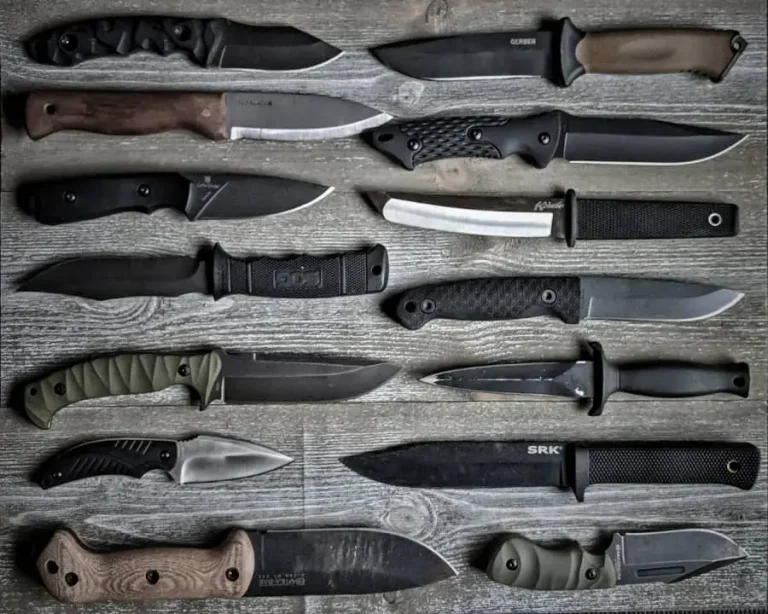
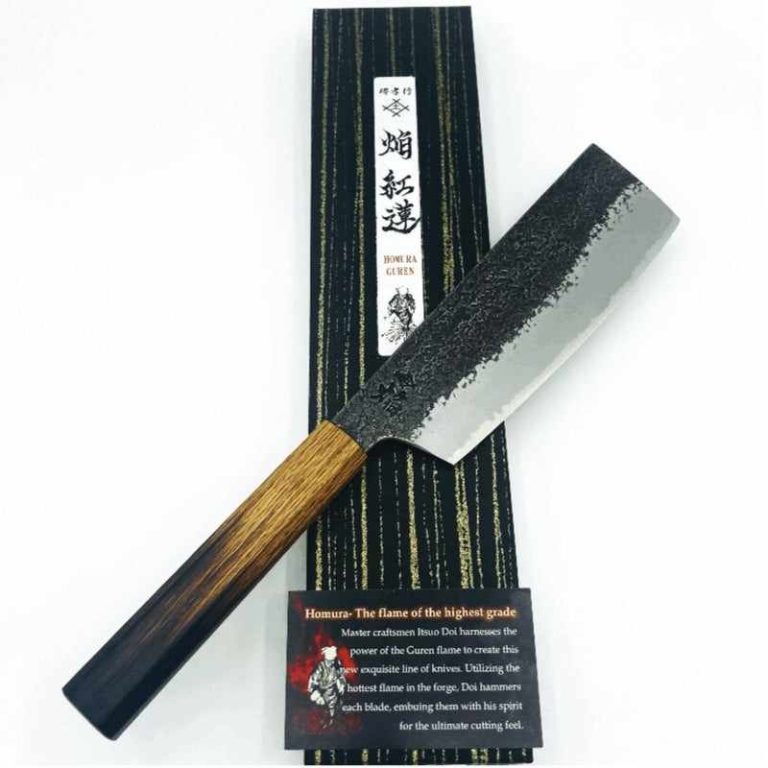
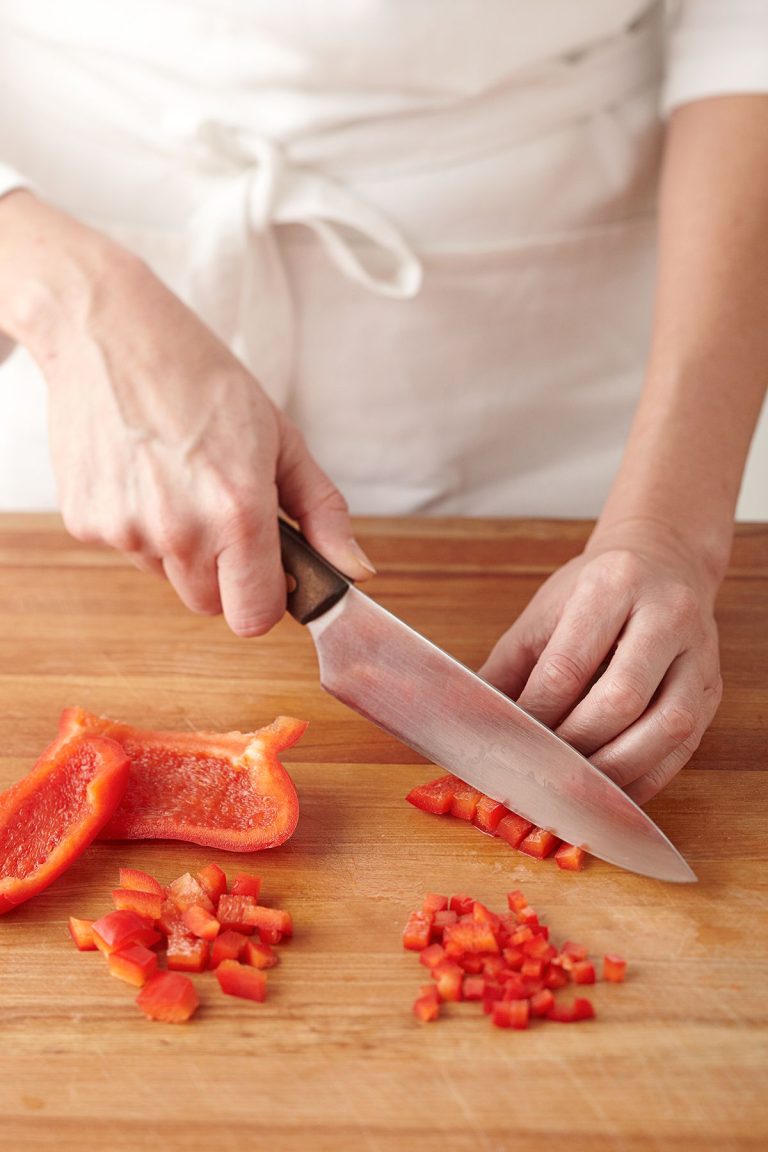
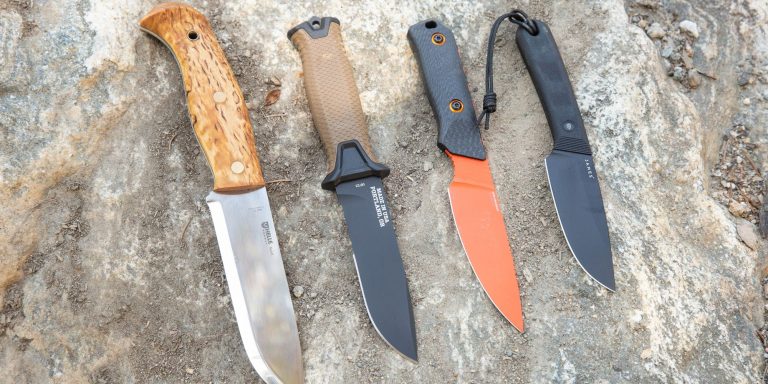
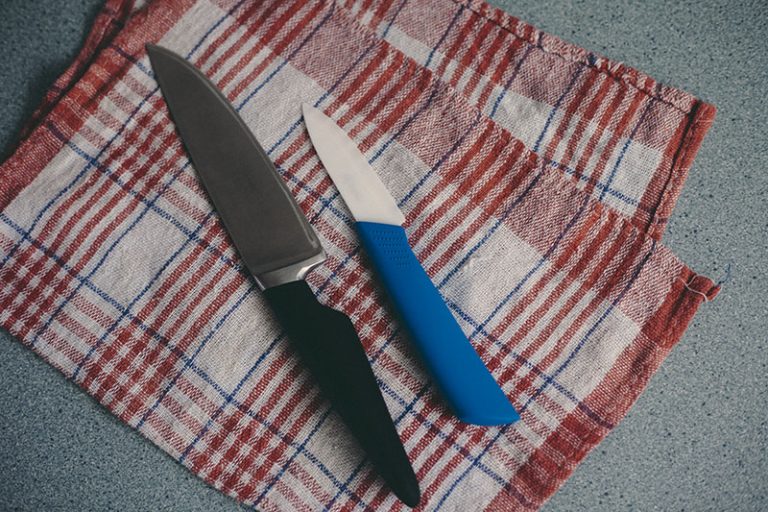
Genuinely when someone doesn’t understand then its up to other viewers
that they will help, so here it happens.
I have been surfing on-line greater than 3 hours nowadays, but I never found any attention-grabbing
article like yours. It is lovely price sufficient for me. Personally, if all site owners and bloggers made good content as you did, the net
will probably be a lot more useful than ever before.
Today, I went to the beach front with my kids. I found a sea
shell and gave it to my 4 year old daughter and said “You can hear the ocean if you put this to your ear.” She placed the shell to her ear
and screamed. There was a hermit crab inside and it pinched her ear.
She never wants to go back! LoL I know this is totally off topic but I had to tell someone!
You have nice day out
Nice to hear that
Thank you
I wanted to thank you for this fantastic read!! I absolutely
enjoyed every little bit of it. I have you book marked
to look at new things you post…
Thank you
I do not know whether it’s just me or if perhaps everybody else experiencing issues with your blog.
It seems like some of the text on your posts are running off the screen. Can someone else please provide
feedback and let me know if this is happening to them too?
This may be a problem with my web browser because I’ve had this happen before.
Kudos
I think is problem on your side
Why ?
Why?
Is probably problem with your browser
We recommend exploring the best quotes Camping Knives on this website
Good job